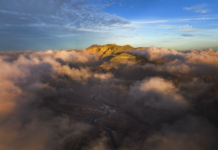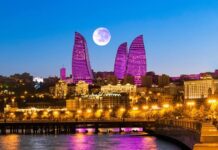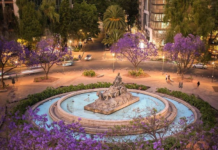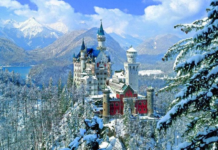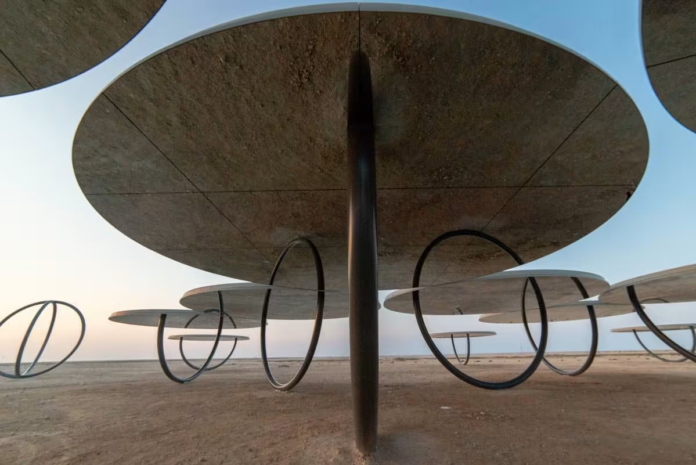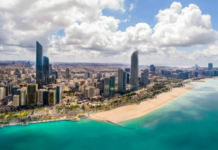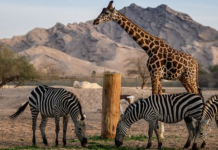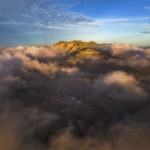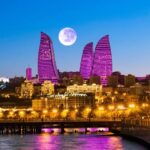The Qatari desert is home to undulating sand dunes, dramatic limestone cliffs and, more recently, art installations that seem otherworldly.
About an hour’s drive north of the massive monolithic sculptures installed by American artist Richard Serra, the rock formations and desert plants dotting the remote landscape give way to a collection of stunning, twisted structures.
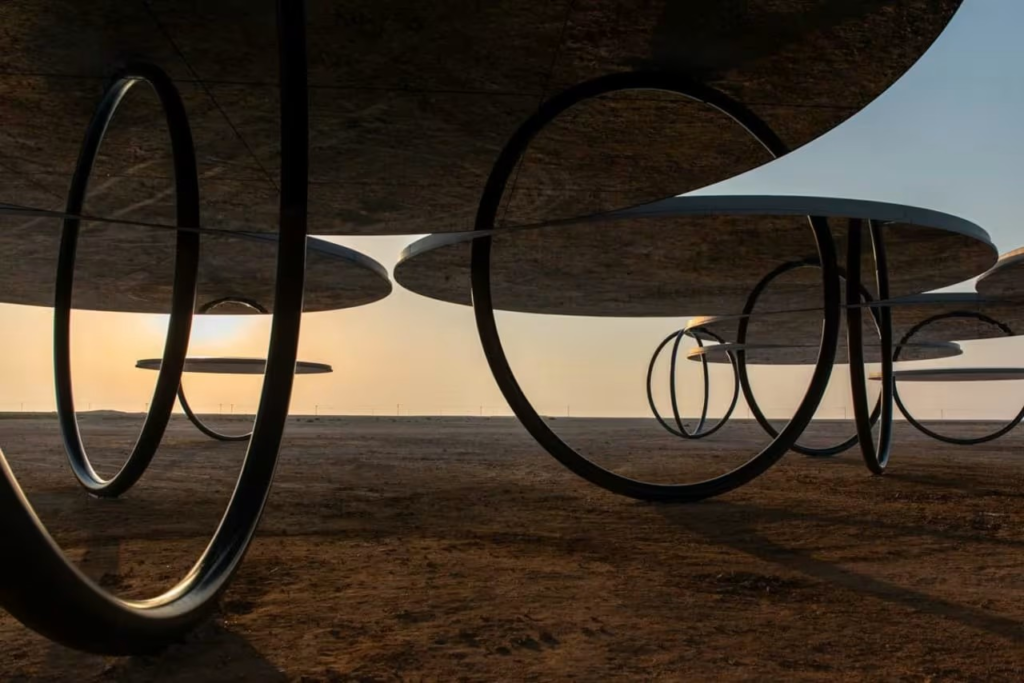
These free-standing rings and silver glass mirrors are the work of Olafur Eliasson, an Icelandic-Danish artist known for his exploration of humanity’s relationship with nature.
The artwork, titled “Travelling Shadows in the Sea of Daylight,” was installed in 2022 in northwest Qatar. It consists of 20 circular surfaces, three single rings and two double rings, arranged along the axes of a symmetrical pentagonal pattern.
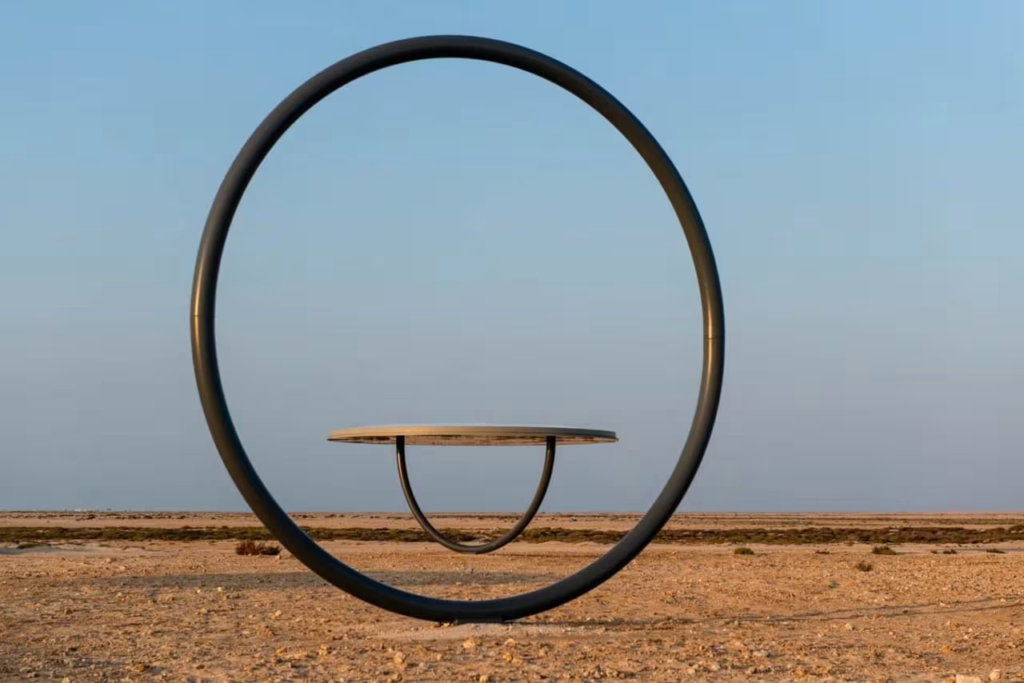
Up close, the geometric shapes appear in harmony with the endless horizon.
Mirror ceilings playfully blend the boundaries between sandy land and expansive sky, while the interaction of sunlight with shadows streaming across the artwork creates ever-changing panoramas.
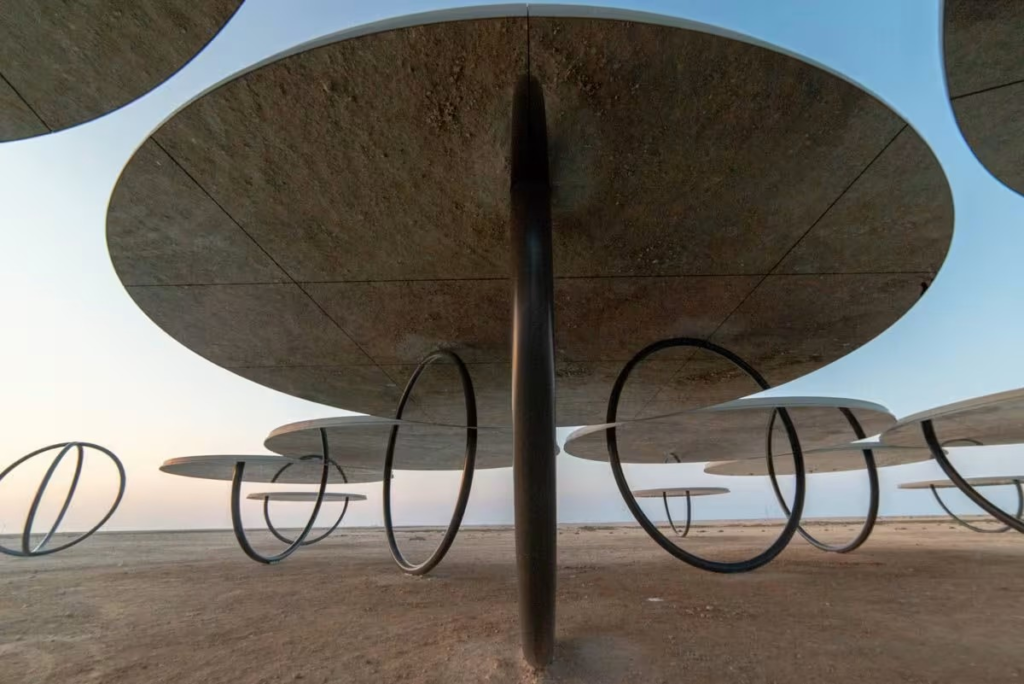
Eliasson, who is based in Copenhagen and Berlin, explained that he was drawn to this remote corner of Qatar because of its surprising similarity to the terrain of his family’s windswept homeland in the North Atlantic Ocean.
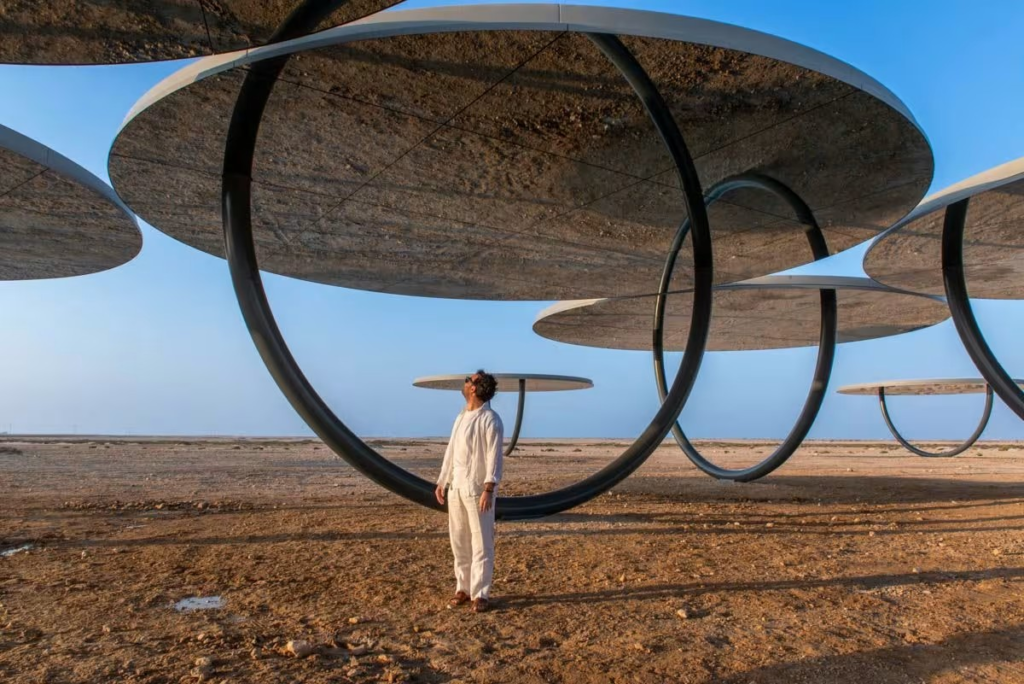
Despite the appearance of a barren desert, Eliasson expressed his astonishment at what he discovered there, and said: “When I visited Qatar for the first time, I was struck by the fact that it was not somewhat different from Iceland, which I know well. It contains these vast landscapes that seem to be on the outskirts of habitable zone.
He continued: “After closely exploring it, it is teeming with life, but to the uninitiated viewer, the desert can appear empty and homogeneous.”
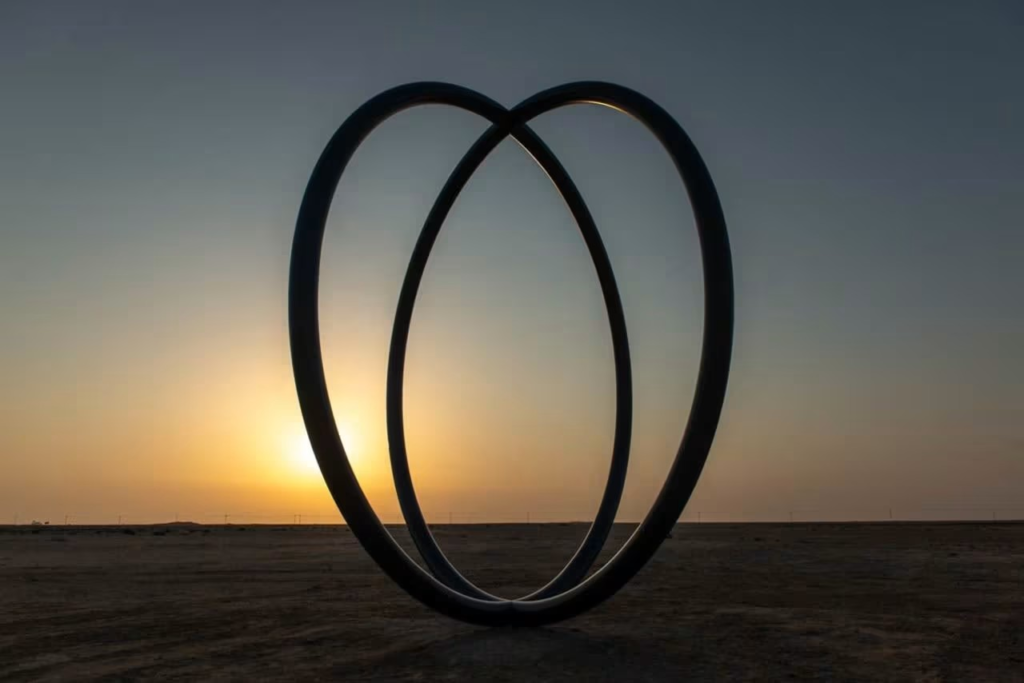
The Icelandic-Danish artist said that his artwork, which documents the recurring patterns of rivers, caves and hiking shelters in Iceland, gave him a perspective on Qatar that distanced him from the shiny new skyscrapers of its capital, Doha.
“I felt very drawn to the Qatari landscape and looked at the country through different lenses, namely the environmental and geological history of the land, which stands out in stark contrast to the massive new architectural projects,” Eliasson said.
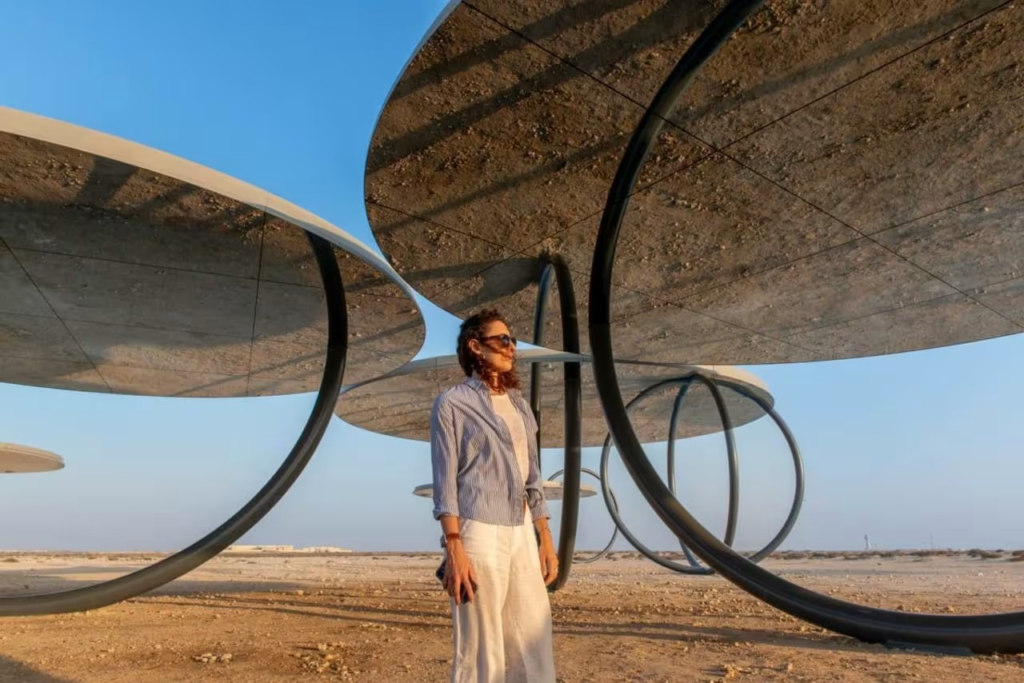
“I am fascinated by these contradictions,” he added.
The artwork can be reached by driving through the rugged desert north from Doha, passing Al Zubarah Fort and the village of Ain Muhammad.
Although the site lacks important historical monuments or topographical features such as mountains or valleys, Eliasson believes that the artwork can contribute to changing visitors’ perceptions of it.
“The artwork, with its mirrors and structure, calls for seeing the landscape in a new way,” the Icelandic-Danish artist explained.
Eliasson noted that the structures are designed to attract people, interact with the installation and encourage them to think about their surroundings.
Since the lower part of the surface is covered with mirrors, the image of the half-rings is doubled, creating an optical illusion that makes the viewer see them as if they are complete rings. These mirrors also cause momentary confusion for visitors standing underneath them when they look up and see their inverted images in the mirrors.
Thanks to the mirrored ceilings, when a person looks up, he realizes that he is actually looking down, that is, at the ground and at himself, and around him are desert sands.


